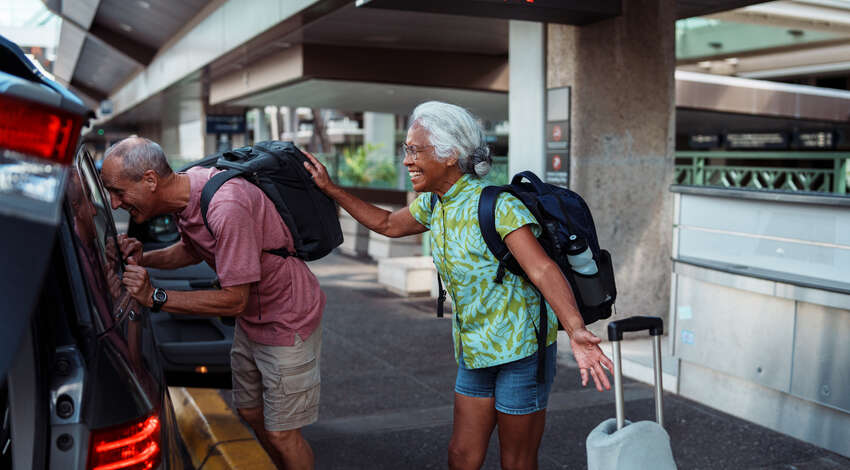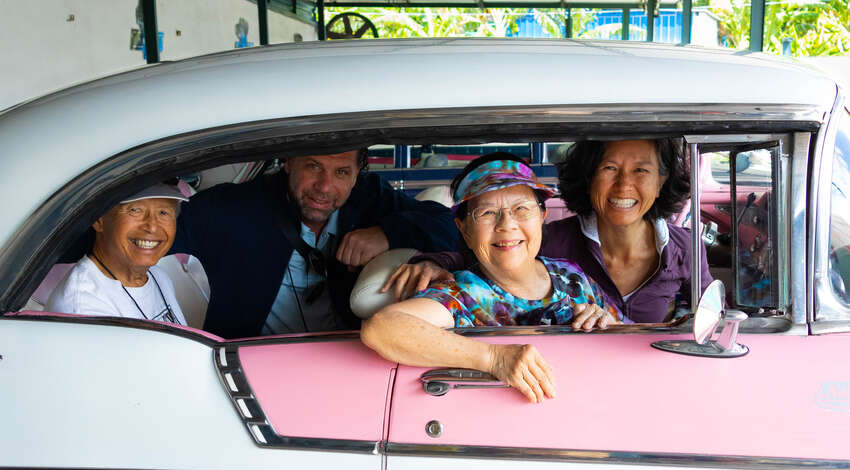Ridesharing 101: A Road Scholar's Guide to Uber, Lyft & More
Once, getting around a new city meant navigating taxis, public transit or rental cars. Now, ridesharing services like Uber and Lyft make it easy to get from point A to B with just a few taps on your smartphone. Understanding these modern tools can add ease, savings and flexibility to your journey, no matter where in the world you’re headed.

What Exactly is Ridesharing?
Simply put, ridesharing refers to arranging transportation using apps that connect you with nearby drivers via your smartphone. Compared to traditional taxis, these services let you:
- Request rides directly from your phone
- See the driver’s name, photo and car details before pickup
- Preview the fare before confirming
- Track the driver’s location in real time
- Pay automatically through the app — no cash needed
The two most popular services in the United States are Uber and Lyft, with international alternatives also available.
Why Use Ridesharing?
There are several good reasons to opt for ridesharing:
- Convenience: Request a ride from anywhere with cell service or Wi-Fi
- Flexibility: Travel on your own schedule
- Door-to-door service: Ideal after a long day or when weighed down with luggage
- Language barriers: The app handles directions and communication
- Budget-friendly: Often less expensive than taxis, especially for longer distances
- Digital receipts: Helpful for budgeting or record-keeping
Getting Started: A Quick How-To
- Download the App: Get the Uber or Lyft app (both are free) and set up an account.
- Set Up Payment: Add a card or follow the link to add PayPal/Apple Pay information. Payment is automatic — no cash or mental math needed.
- Request a Ride: Enter your destination, choose a vehicle type, review the fare and tap “Request.”
- Meet Your Driver: Confirm the car and driver match the app info.
- During the Ride: Watch your route, and share your trip status if you like.
- After the Ride: Rate your experience.

Safety Tips
Ridesharing safety is a common concern. Here are important practices:
- Verify driver details: Confirm the license plate and driver match the app’s info
- Share your trip: Both apps have features to share your route and ETA with a friend or loved one
- Ride in the back seat: Gives you and the driver personal space
- Travel with others: When possible, book a group ride, especially at night
- Check reviews: Drivers are rated by previous passengers
- Stay in contact: Keep your phone charged and accessible
- Trust your instincts: If something feels off, don't get in the car
Cost Considerations
Fares vary based on:
- Distance and time
- Demand (prices surge during peak times)
- Vehicle type (standard, XL, luxury)
- City/country
Compare prices between Uber and Lyft — they can differ. You’ll always see the estimated fare before confirming.
Accessibility Options
Both major ridesharing companies offer accessibility features:
- Wheelchair-accessible rides: Uber WAV and Lyft Access
- Settings for visual/hearing needs: Can be found in both apps
- Service animals: Must be accommodated by drivers
Check each app for location-specific accessibility options.
No Smartphone? No Problem.
You can still access ridesharing without a smartphone. Some assisted living centers, senior services and health organizations can help book rides for you. Uber Health allows health care providers to arrange rides to appointments, and services like GoGoGrandparent offer phone-based ride booking for Uber and Lyft.

FAQs
Q: What about airports?
A: Most airports have designated rideshare pickup areas. The app will guide you.
Q: Do I tip?
A: Tipping is optional but appreciated. You can do it through the app.
Q: What if I lose something?
A: Use the “lost item” feature in the app to contact your driver.
Q: Can I schedule a ride in advance?
A: Yes, both apps allow ride scheduling.
Q: Do rideshare services like Uber and Lyft work overseas?
A: Uber operates in over 70 countries, so it's often available abroad — but not everywhere. Lyft is only available in the U.S. (and limited service in Canada). Many international destinations use their own rideshare apps, like Bolt (Europe), DiDi (China,Australia, New Zealand, Mexico and some parts of Central and South America), and Ola (India, Australia, New Zealand and the United Kingdom). These apps work much like Uber, but you may need to download them ahead of time.
Local Intel — A Definite Bonus
Some of the best restaurant tips and local gems come straight from your driver. Rideshare drivers often know their city inside and out — don’t be shy about asking for recommendations!
At Home or Away
While ridesharing can be a game-changer on your journeys, even at home, if you're headed to a lecture, dinner or the airport, these apps offer a reliable, easy way to get around. With a little preparation, they can become a wonderful addition to your learning adventure toolkit!
Have a favorite rideshare story or discovery? Join the conversation — and the Road Scholar community — on Facebook!
